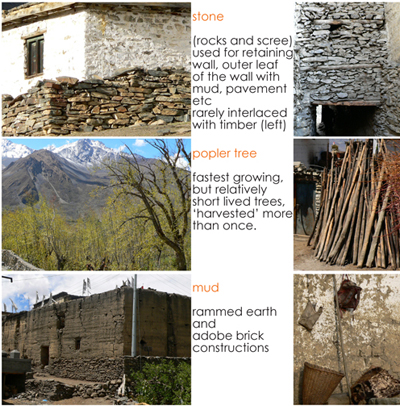Key Design Issues
1. Use of the solar energy
There is no other means to heat the building other than the sun (Trombe wall and sunspace). There are no trees that can be used as fuel, no gas or coal or anything else available. I have seen the people using an iron pot with yak and horse dung for heating. The climate is very harsh and desert-like. It is very cold, windy and arid.
Frequent and intense sunshine means a passive solar house could make the building usable most of the winter.
2. Using local materials
It would be very important to promote the idea of using local materials and labours as opposed to most of the new constructions in the region – multi storey concrete framed, which are out of scale and context. We need to create a school that fits in its surroundings sympathetically, appreciating the ancient culture and the beautiful landscape with those amazing mud houses.
3. Flat roof construction
The site is very windy and so the shape of the roof is important. The higher the roof the greater the positive pressure on its windward side and the greater the negative pressure on its leeward side. It is this negative pressure that typically rips roofs off buildings.
The roof is generally constructed with timber rafters spaced at short intervals with wooded flats to cover the gap, over which a layer of mud is spread. This type of roofing also offers better performance during an earthquake as it prevents the collapse of the entire roof and only portions of it are damaged.
4. Earth quake resistance
Nepal is a highly seismic region, lying above the collisions of the Indian and Eurasian plates that created the Himalayas. Over the recent centuries, major earthquakes have hit the Kathmandu Valley every 75 years on average.
The last major Himalayan earthquake occurred in September 2011 in Sikkim, East Nepal (ML 6.9).



